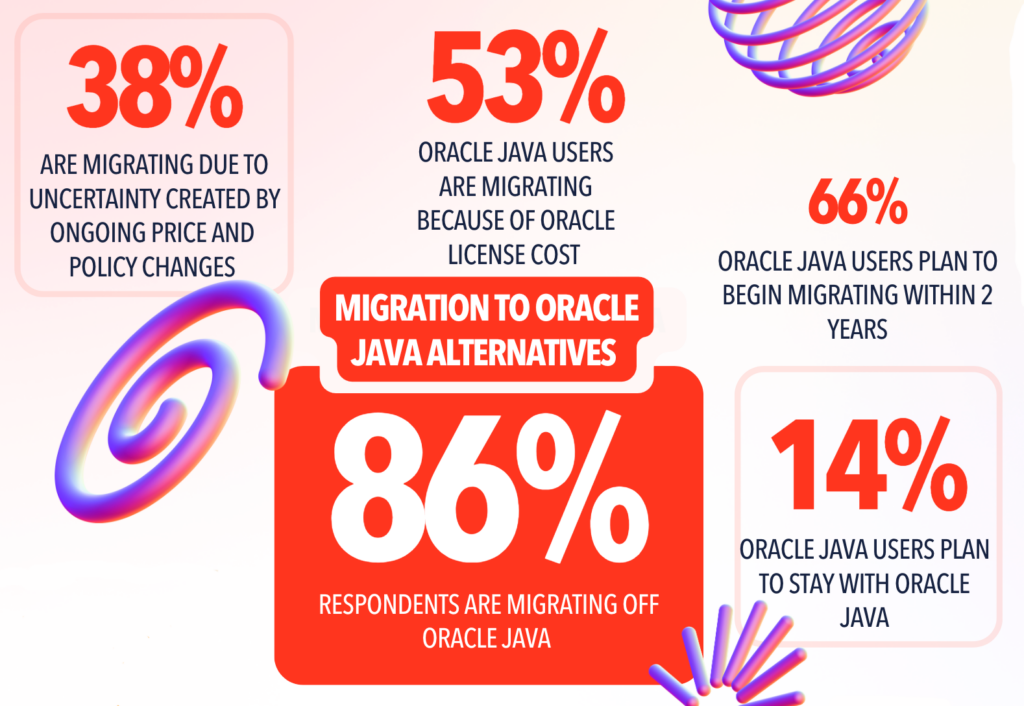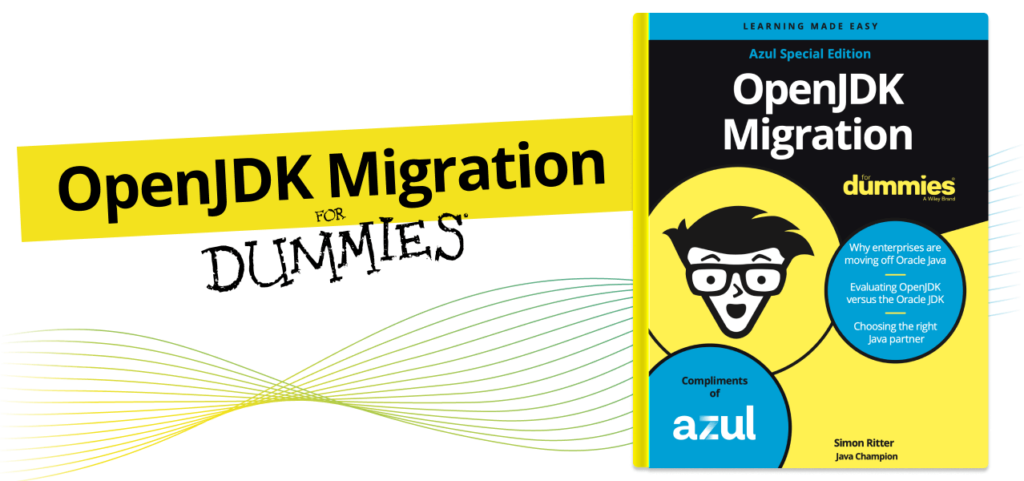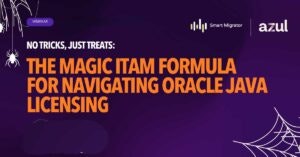
IT asset managers have their hands full when they’re trying to strike the best path forward for their companies’ use of Java. Finance leaders at many companies are turning to ITAM professionals and asking them to reduce the cost of Java with a magic ITAM formula.
Azul Vice President of Worldwide Channel Sales Simon Taylor and Peter Simeonov, founder and CEO of Smart Migrator, discussed Java and asset management in a recent webinar, The Magic ITAM Formula for Navigating Oracle Java Licensing. They identified three types of customers and how they can navigate the way forward.
But first, a little context.
In January 2023, Oracle changed its Java licensing and/or pricing model for the fourth time in four years. Under the new model, Oracle Java customers pay based on the number of employees – including part-time workers and contractors. For large companies using a moderate amount of Java, the price increase can be dramatic. Organizations that didn’t budget for higher Java costs are now asking ITAM professionals to find a solution.

Understanding the types of Java users affected by Oracle licensing
In the webinar, Taylor and Simeonov explained that there are three types of customers in this situation, and each has a unique set of challenges.
- Companies paying for infrastructure-based licensing: These companies have historically paid fees based on infrastructure use and now face the shift to a headcount model, often resulting in a significant cost increase.
- Organizations using Java without proper licensing: Some companies may have used Java without tracking licenses closely, perhaps unaware of Oracle’s licensing requirements. This group is at risk if Oracle initiates an audit.
- Companies with unknown Java usage: Many organizations don’t know if they’re using Java or to what extent, due to a lack of visibility across the IT estate. This can lead to unanticipated compliance issues.
Many companies struggle with outdated or incomplete inventories of their Java estates. Lack of visibility makes tracking Java distributions and versions challenging. A complete, up-to-date inventory of all Java installations across the organization is critical.
Your options as a commercial Java user
As a commercial user of Java, you have several potential paths:
- Ignore Oracle’s audit warnings: Some organizations don’t take Oracle seriously, but waiting for a direct audit notice from Oracle is a mistake because it puts your organization in a position of weakness.
- Negotiate with Oracle: For existing Oracle Java customers who are still on a processor-based pricing model, negotiating can help reduce costs. owebut it is sure to be a difficult process. The result may be a three-year or five-year contract, which locks your company into a long-term deal with Oracle.
- Cooperate fully: Providing Oracle with all requested information can ensure compliance, but it will expose your company to high fees.
- Remove Java: Rebuilding applications in a different programming language to avoid Java can be a complex, costly process, and most organizations are not equipped to do it.
- Switch Java Providers: Several alternative JDK providers offer open-source versions that meet enterprise needs with lower fees.
If you decide to switch providers, which Taylor and Simeonov recommend in most cases, choose a distribution that offers commercial support and Critical Patch Updates. Here are a couple things to keep in mind:
- Common Vulnerabilities and Exposures (CVEs) are still common in older Java versions like 6 and 7. Oracle doesn’t provide commercial support for these versions anymore. If you don’t want to upgrade your Java version, select a vendor that suports older versions.
- Critical Patch Updates provide security-only updates, and they are much smaller and quicker to install than full PSUs, which usually require regression tests.
Azul is here to help
Azul reduces the risks associated with replacing your Oracle Java. With 100% success migrating organizations off Oracle, you can take advantage of the Azul Migration Methodology. Perfected from years of migration experience, trust your Azul migration team to successfully guide you and your IT operations through the entire Java migration process.

Azul literally wrote the book on OpenJDK migration. OpenJDK Migration for Dummies defines the Azul Migration Methodology asa three-phase process:
- Discovery. Identify which versions of Java are being used by which applications and on which machines within your organization, including cloud instances. You’ll use this inventory to create a migration plan.
- Execution. For each machine that requires a Java runtime, install the same version (or versions) of the OpenJDK distribution you choose.
- Validation. Test your applications to verify that everything works as expected.
Azul’s discovery and inventory analysis scanning tools are guaranteed to find every Oracle Java executable and installation throughout your IT infrastructure. Support is available if you need migration services, guidance from our Java experts, or a quick migration off Oracle Java SE. Azul and its large partner network of certified service providers are ready to help.









